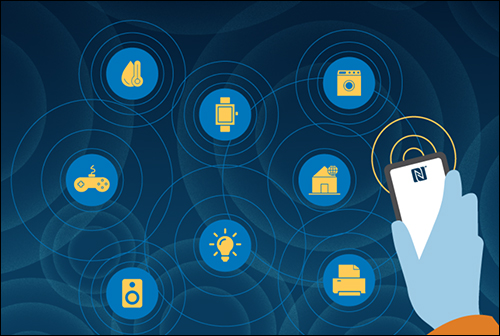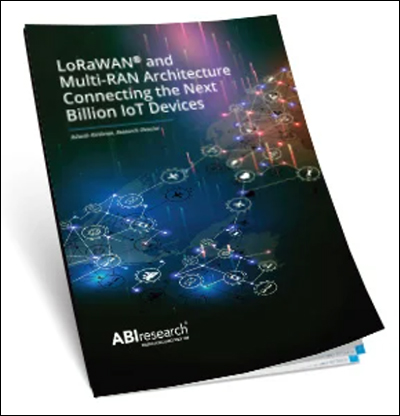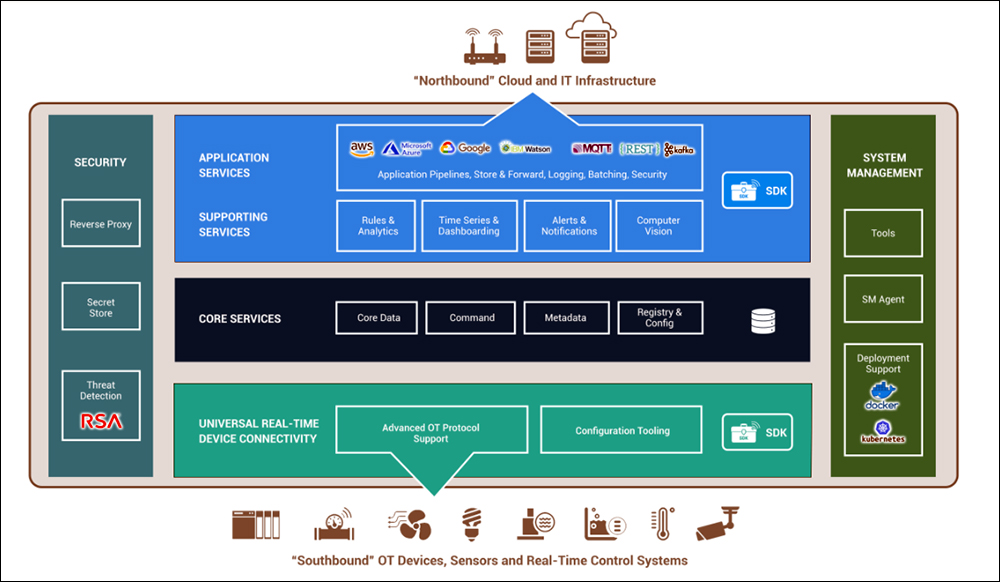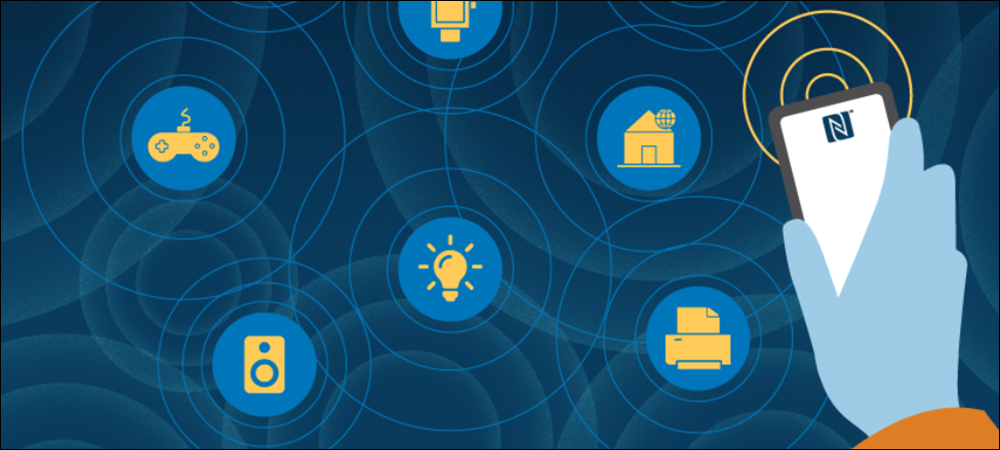Presented here are recent news announcements regarding the following organizations: the NFC Forum, XO2Tech, ABI Research, FogHorn, IBM and IOTech.
NFC Forum Publishes eID for Mobility-as-a-Service Document
The NFC Forum has released a document detailing a strategy for users to develop and deploy electronic identification (eID) for mobility-as-a-service (MaaS) implementations. The document, titled “Management and Use of Identities in Mobility and Transport MRD,” is free to download, and the organization is inviting public comment on its contents. It was conceived and created by the NFC Forum’s Mobility, Identity and Transport Special Interest Group.
 Servicing a variety of modes of transportation and their related services, MaaS offers such benefits as improved transport interoperability with integrated payments, easier access, reduced journey times and real-time planning information, according to the NFC Forum. The technology also allows for improved visitor and tourist support and the ability for all travelers and their devices to be connected at all times. Identity information connects the various modes of transportation and their service operators in order to support MaaS and enable a multi-leg, multi-modal journey for customers, the NFC Forum explains.
Servicing a variety of modes of transportation and their related services, MaaS offers such benefits as improved transport interoperability with integrated payments, easier access, reduced journey times and real-time planning information, according to the NFC Forum. The technology also allows for improved visitor and tourist support and the ability for all travelers and their devices to be connected at all times. Identity information connects the various modes of transportation and their service operators in order to support MaaS and enable a multi-leg, multi-modal journey for customers, the NFC Forum explains.
“Multi-modal travel and MaaS are global trends that will have customers demanding simplicity and security from the first to the last mile of every trip,” said Mike McCamon, the NFC Forum’s executive director, in a prepared statement. “This MRD is focused on using NFC technology when deploying eID in MaaS application. It’s a complex puzzle to deliver a MaaS solution based on a trustworthy eID. NFC technology provides users with an intuitive, touchless and convenient interface to onboard and use eID within MaaS applications. This NFC Forum document is expected to help guide these discussions and the tangible efforts needed to solve this puzzle.”
XO2Tech Intros RFID Data-as-a-Service Platform
XO2Tech has introduced its Smart Care Platform and AI-Caregiver Assistant, a well-being, health, diagnostic and therapeutic wireless RFID tag monitoring system designed to improve the quality of home care and aging-in-place. According to Edward Espinosa, the company’s founder, the data-as-a-service platform provides a holistic approach to treating an individual’s health.
The Smart Care Platform and AI-Caregiver Assistant is plug-and-play, Espinosa said in a prepared statement, so it can be removed from the box and be ready for use following setup. The system combines voice, RFID tags, artificial intelligence and deep neural network architecture to monitor, measure and analyze a user’s vital signs and well-being via the tags. It detects minute variations in a user’s voice, heartbeat, breathing and blood pressure rates in response to interactions or reactions to stimuli, such as food, medication, events, interpersonal relationships, ambient conditions, actions and more.
According to Espinosa, the solution is designed to provide simplicity and clinical accuracy. A user can attach an RFID tag band to his or her wrist or drop the tag into a shirt pocket, and the tag will then be activated and be ready for monitoring. The system can be expanded as needed, he said, allowing multiple users or family members to be monitored simultaneously. The solution does not require a watch, disposable sensor or other monitoring gadget to generate or collect a user’s health and care data, Espinosa noted. The tags are off-the-shelf and can be easily replaced. They do not need to be changed and require neither charging nor batteries.
Users can control, monitor and receive healthcare data without the need for an operating screen. The system continuously monitors a user’s vital signs and can also track temperature, gait analysis, body position, activity level, fall detection, coughing, vomiting and bowel management. In addition, the platform is designed to recognize emotions by extracting RFID signal data from the measured radio frequency physiological data generated by the tags, in order to determine a user’s emotional state.
The platform’s primary objective, Espinosa reported, is to provide continuous monitoring and reporting of a user’s interactions, along with positive or negative reactions to the above stimuli, using RFID tags. The system employs AI and predictive analytics to analyze the interactions, reactions and general health data gathered from the RFID signals. Caregivers can then provide diagnosis, therapy, recommendations and intervention as needed, as well as report health and well-being data to authorized parties.
Services include tracking a user’s daily adherence to medication, food and routine recommendations, as well as sleep patterns. It can also provide smart diaper monitoring, Espinosa said, in addition to food usage and safety monitoring. These services can be controlled, activated or turned off by a caregiver or user, he added, depending on their specific needs and privacy concerns.
ABI Research White Paper Highlights LoRa and LoRaWAN Growth
Semtech has announced the release of a white paper titled “LoRaWAN and Multi-RAN Architecture Connecting the Next Billion IoT Devices,” commissioned from global technology market advisory firm ABI Research. The report explores the rapid growth of Internet of Things (IoT) connectivity and real-world applications leveraging multi-RAN architectures. ABI Research found that the LoRaWAN protocol is the leading license-exempt low-power wide-area network (LPWAN) technology addressing massive IoT vertical markets, which include metering, cities, asset tracking, logistics, commercial building automation and home use.
The white paper explores five active LoRaWAN network implementations based on multi-RAN architectures: Orange enables device and data management for cellular and non-cellular LPWAN technologies, via the Orange Live Objects platform. JRI-MySirius uses sensors leveraging LoRaWAN and a cloud-based application platform to provide turnkey temperature monitoring for fixed and mobile assets. Ercogener developed an asset-tracking solution that supports the LoRaWAN protocol and is leveraged by France’s state-owned railway company. MultiTech’s programmable gateway integrates LoRa for industrial IoT applications, with support for Ethernet, 2G, 3G, 4G-LTE, Wi-Fi, Bluetooth/BLE and GNSS. And Chevron implemented a LoRaWAN network infrastructure to digitize oil and gas fields.
 “The future of IoT connectivity requires flexible solutions that address a wide spectrum of vertical IoT applications, use cases and device types,” said Marc Pegulu, the VP of IoT applications in Semtech’s Wireless & Sensing Products Group, in a prepared statement. “LoRa and the LoRaWAN open protocol enable interoperability and seamless connection between the many devices that can exist in a single environment. As a technology provider, our job is to create solutions that make deployment and use easier for people.”
“The future of IoT connectivity requires flexible solutions that address a wide spectrum of vertical IoT applications, use cases and device types,” said Marc Pegulu, the VP of IoT applications in Semtech’s Wireless & Sensing Products Group, in a prepared statement. “LoRa and the LoRaWAN open protocol enable interoperability and seamless connection between the many devices that can exist in a single environment. As a technology provider, our job is to create solutions that make deployment and use easier for people.”
The study concluded that LoRa devices will play an important role as a key LPWAN technology as the IoT connects physical devices to digital assets. Additional takeaways include the following: 5G and non-cellular network technologies will co-exist; LoRaWAN and 5G will also co-exist as hybrid networks or multi-RAN architectures; full 5G will take longer than expected; 5G is incapable of addressing massive IoT in the near term; and 5G networks and the device hardware supporting the Release 17 specifications will not be commercially available until early 2024.
According to the white paper, LoRa leads in LPWAN technologies. By 2026, LoRa is expected to be the leading non-cellular LPWAN technology, accounting for more than a quarter-share of all LPWAN connections and more than half of all non-cellular LPWAN connections. Total non-cellular LPWAN connections in 2026 are expected to reach 1.3 billion. LoRa is moving beyond enterprise applications, the white paper indicates, with consumer applications leveraging LoRa now taking off. Traditional architecture is witnessing competition from LPWAN technologies, providing direct device-to-cloud connectivity for a growing number of smart-home devices.
FogHorn, IBM Collaborate on Edge-to-Hybrid Cloud Solutions for IoT
FogHorn, a developer of edge-computing artificial-intelligence (AI) software for industrial and commercial Internet of Things (IoT) solutions, has announced plans to collaborate with IBM. The goal is to provide an open, secure hybrid cloud platform with edge-powered AI and closed-loop system control. FogHorn and IBM report that they plan to help customers deploy, process, store and analyze data from edge to cloud, as well as enhance business processes.
“With computing done in so many places—on public and private clouds and the edge—the challenge that businesses face is to connect all these different elements into a cohesive, end-to-end platform,” said Chris Penrose, FogHorn’s chief operating officer, in a prepared statement. “Through our upcoming collaboration, FogHorn will leverage IBM Edge Application Manager to deliver edge-to-cloud FogHorn solutions for our customers that can help them make more informed decisions with their data, in real time. Combining FogHorn’s vertical expertise with IBM’s cloud know-how, we will create the opportunity to address a wide range of edge use cases, which has the potential to deliver operational savings, improved up-time, reduced waste and lower energy consumption.”
FogHorn Lightning Edge AI offerings provide low latency for onsite data processing and real-time AI, as well as analytics and machine learning capabilities, combined with IBM Edge Application Manager, which runs on Red Hat OpenShift. The solution is being engineered to run and manage workloads on virtually any edge endpoint, the company reports, including devices, clusters, servers, gateways and machines supporting RHEL and other Linux operating systems, with Red Hat OpenShift, and Podman and other Docker runtimes.
This affords organizations the flexibility to extend their operations from any public or private cloud to any edge server or asset, FogHorn reports, and is intended to allow for a single system of record. The company’s offerings can be integrated with IBM Maximo Application Suite to increase the performance of physical assets and accelerate maintenance, monitoring and reliability options, powered by the Lightning Edge AI Platform.
“We look forward to collaborating with FogHorn as part of the IBM edge ecosystem, to help clients realize the full value of an open hybrid cloud approach by bringing together the edge with IT data centers, private clouds and public clouds from multiple providers,” added Evaristus Mainsah, the general manager of IBM’s Hybrid Cloud and Edge Ecosystem division, in the prepared statement. “The power of IBM Edge Application Manager, combined with FogHorn’s experience in manufacturing, oil and gas, industrial IoT and building energy management, offers an end-to-end FogHorn solution that will enable organizations across industries to act on insights closer to where the data is being created, at the edge.”
IOTech Software Supports Computer Vision, AI at IoT Edge
Edge software company IOTech has announced that the latest release of its Edge Xpert solution supports computer vision and artificial intelligence at the Internet of Things edge. The edge-computing platform is the company’s commercial implementation of EdgeX Foundry. Edge Xpert v1.8 is now being offered as an add-on for computer vision, enabling users to run AI algorithms and vision models. Based on Intel’s OpenVINO toolkit, the Edge Xpert computer vision service allows users to deploy vision-based workloads alongside existing intelligent edge solutions.
In conjunction with existing support for IP camera and video device connectivity, Edge Xpert users can now control camera devices, collect video streams, and automatically apply AI and vision inference. The service supports models that can include object detection, classification and recognition, then passes that inferred intelligence to other services for decision-making and control. Edge Xpert supports the ingestion of data from multiple industrial protocols and devices, the company reports, and users can aggregate and fuse together sensor data with vision inference results.

This latest release of Edge Xpert includes features designed to fast-track the rollout of edge solutions, the company indicates, including tooling and enhancements to the existing array of IOTech’s edge-device connectors. Edge devices can be connected and automatically onboarded to the platform at scale. The solution also includes features provided in the Hanoi release of EdgeX Foundry, such as the ability for device connectors to be distributed on different hosts to other microservices, data tagging to uniquely identify data sources as the information is transported northbound, and more.
“Providing our users with the ability to easily run computer vision inference and advanced AI at the edge is an exciting advancement as they launch solutions into the market,” said Keith Steele, IOTech’s founder and CEO, in a prepared statement. “There are literally thousands of vison-based use cases, from automatic theft detection to safety systems and predictive maintenance, that all rely on computer vision and AI at the edge. We will soon be announcing a number of key partnerships and innovations in this space.”


